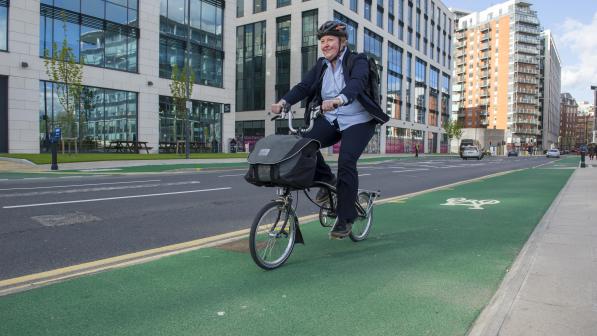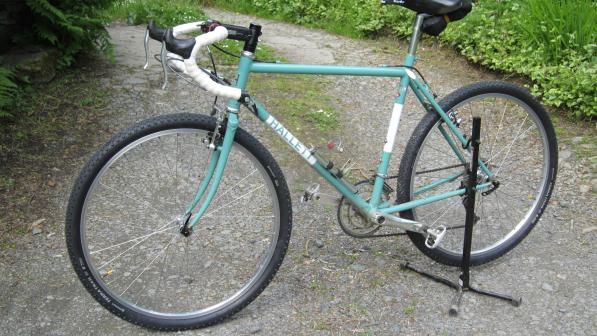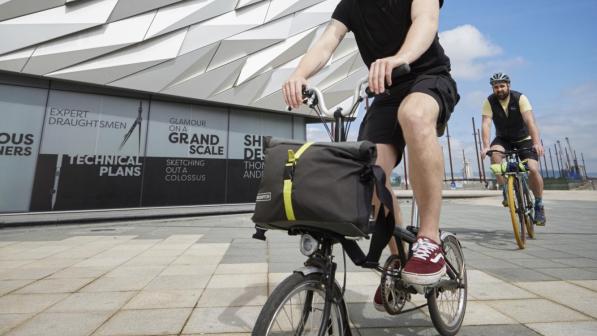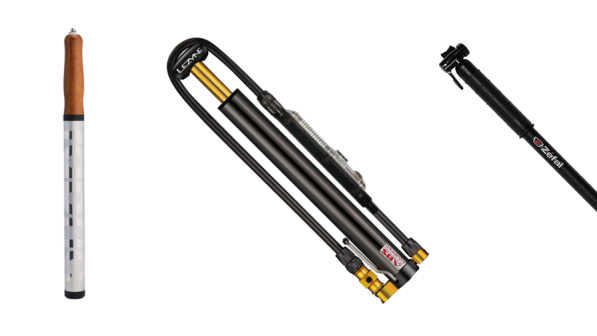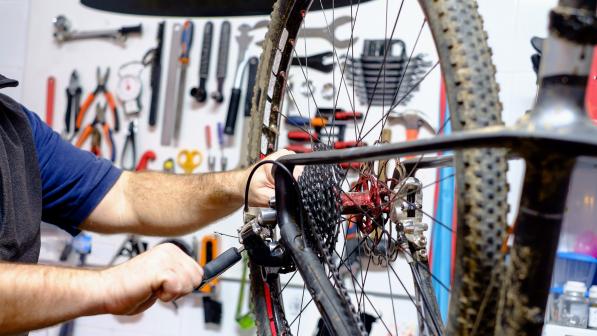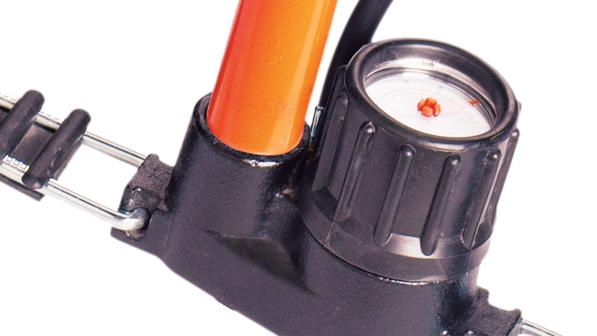Group test: Choose the best floor pumps

A floor pump is one of the most useful additions to any cyclist’s home workshop. Whether inflating mountain bike tyres with a huge air volume or putting high pressures into narrow road tyres, a floor pump will save you time, effort and frustration compared to a small hand pump.
Pumping isn’t just easier, it’s more accurate because a floor pump’s pressure gauge takes the guesswork out of making tyres firm or supple enough.
Most floor pumps are track pumps, with T-shaped handle for the hands, a vertical barrel and a hose that connects to the tyre valve. Foot pumps are also an option, however, and we’ve included one in this test.
SKS Airstep Foot Pump £42.99

Unless you’re wearing cycling shoes with cleats, this foot pump is really easy to use. My mum and daughter had no problems with it.
The pump head is designed for both Presta and Schrader valves and locks on securely in one go. When not in use, the Airstep is compact and easy to store – the hose coils up neatly and the moving foot plate fixes in place.
The only downside is the relatively slow input of air.
Max: 102psi. Strokes to reach 20psi (27.5×2.4in tyre): 43.
Verdict: compact and user-friendly foot pump with modest max pressure
Lezyne Sport Gravel Drive £65.99

Most track pumps are made to put high pressures into narrow road tyres; this one is meant for gravel bikes and other mid-volume tyres. It only fits Presta valves, but locks on easily and the head can be adapted for seating tubeless tyres (with the valve core removed).
The thin foot plate is stable and the wooden handle comfortable, making it easy to use. The long hose was sometimes a nuisance as it didn’t clip securely in place.
Max: 100psi. Strokes to reach 20psi (27.5×2.4in tyre): 21.
Verdict: Presta only, but great for gravel, touring and commuter tyres
Topeak Joe Blow Mountain X £52.69

Designed for mountain bike tyres, the Joe Blow shifts a lot of air per stroke but tops out at 60psi so won’t double as a road bike pump. It does Presta and Schrader valves – you engage the relevant connector and lock it on with a central lever.
It works fine but isn’t as comfortable to use as the Lezyne, and the hose is fairly short. The large volume pump cylinder means that it fills the tyre more quickly but each stroke is harder work.
Max: 60psi. Strokes to reach 20psi (27.5×2.4in tyre): 11.
Verdict: ideal for (but limited to) lower pressure, higher volume tyres
Cube Acid Race Digital £27.99

First, the good news: the gauge is brilliant. Mounted high up and with a clear digital display, it’s easy to read and to toggle between PSI and BAR. There’s an air release valve on the gauge too. The base is stable and the handle comfortable.
The problem is the EZ-Head. It’s meant to push on but didn’t do so securely, especially on Schrader valves, where it leaked air badly. I resorted to YouTube to see if anyone had made a video of how to use it…
Max: 160psi. Strokes to reach 20psi (27.5×2.4in tyre): 21.
Verdict: let down by the pump head, which is anything but ‘EZ’
Overall verdict
The pump I ended up using most was the SKS Airstep. Although it’s the least efficient at putting air into the tyre, it is so easy to use and store that it feels completely hassle free.
For Presta-valved tyres up to 100psi, the Lezyne is a great pump. It’s by far the most comfortable to use, and the facility to seat tubeless tyres is handy.
The Topeak pump is well suited to mountain bikers and fat bikers. It gets wide tyres up to pressure in minimal time, albeit with more effort.
The Cube pump was frustrating. The insecure attachment, especially to Schrader valves, left me feeling that I was missing something.
